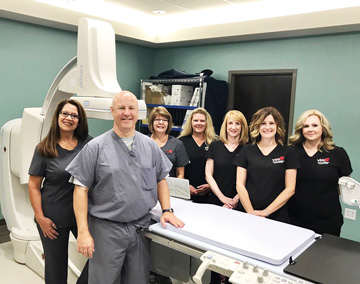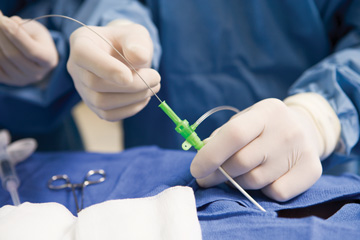QMG knows the opportunity to provide cardiac care in outpatient facilities offers a wealth of promise for physicians and patients. Efforts to move more cases to surgery centers continue, but are being tempered by regulatory requirements, powerful
hospital lobbyists and questions surrounding Medicare reimbursements (see “CMS Changes Stance on ASC Codes”).
There are two types of outpatient facilities that deal with matters of the heart and vascular system: ASCs and office-based labs (OBLs). Currently, they are two different types of sites of service as defined by CMS, largely performing different
types of procedures. The desire to combine cardiac ASCs with OBLs to provide comprehensive outpatient cardiology services makes practical sense for many facility leaders and physicians, and is enticing for patients who want to avoid having
relatively simple procedures performed in hospitals — especially during COVID-19.
If only it were that simple, however. The obstacles to adding outpatient cardiac cases can be daunting, depending on the state in which you’re operating. Eric Dippel, MD, FACC, FSCAI, founder and president of Vascular Institute of the Midwest
in Davenport, Iowa, estimates there are around 900 OBLs across the country. Many of them, like his, are “mom and pop” operations, owned by physicians and not part of large local healthcare or hospital systems.
Dr. Dippel, an interventional cardiologist frustrated with the inefficiencies and bureaucracy of the hospital system at which he had worked, founded his OBL in 2016. He performs coronary and peripheral vascular angioplasty and stenting, superficial
endovenous procedures, pacemaker placements and diagnostic imaging and testing. Because of regulatory limitations, however, he’s focused mostly on peripheral vascular work at his facility.
“Every state has their own regulations,” says Dr. Dippel. “Iowa is a certificate of need (CON) state.” CONs are state regulatory mechanisms for establishing or expanding healthcare facilities and services in a specific
geographic area. The idealism behind CON laws is to control healthcare costs by restricting duplicative services in communities. The reality, says Dr. Dippel, is the laws effectively quash many independent facilities from reaching their full
potential, or even getting off the ground in the first place. “In Iowa, you must apply for a CON to open an ASC,” he adds. “Local regulations are difficult to overcome as an individual provider.”
What’s more, Dr. Dippel says he’d actually need to apply for two CONs — one to establish an ASC and another to perform coronary interventions. In each case, he would need to argue his case to a panel of physicians and other health
providers as to why these services are needed in the local community. “If I tried to do that, the hospitals in town would oppose me,” he says. “It would be an uphill battle.”
Dr. Dippel notes that not all states require CONs before new healthcare projects are launched. In states that don’t have CON laws, it’s much easier to open an ASC where physicians perform procedures such as coronary angiograms and
transesophageal echocardiograms, as well as place stents, pacemakers and loop recorders. “There’s talk around the country of getting rid of the CON requirements in some states,” says Dr. Dippel, “because it’s
an antiquated, inefficient system.”
Even if a CON is obtained, Dr. Dippel notes, an existing OBL and a new ASC located in the same building must be separate business entities — and that’s just the beginning of the upgrades required. “There are more regulations
to navigate when opening an ASC than there are when opening an OBL,” he says.
CMS doesn’t allow billing under two different places of service at the same time from the same address, explains Dr. Dippel. He says cardiology practices must create hybrid facilities, which he explains with this example: “Monday,
Tuesday and Wednesday, they run it as an OBL. Thursday and Friday, they run it as an ASC.”
Dr. Dippel is confident that despite regulatory and other roadblocks, the exodus of cardiology procedures to outpatient facilities is essentially unstoppable over time. “As more vascular procedures are done in the ambulatory setting, the
natural progression is that coronary procedures will follow,” he says. “The landscape is definitely evolving, and will continue to evolve.”
For now, Dr. Dippel’s work is focused on the blood vessels outside the heart. “I do a lot of limb salvage procedures,” he says. “I get a lot of referrals from wound clinics for patients who have non-healing ulcers. I put
stents in diabetic patients’ legs to improve circulation so they can avoid amputations.”
In his view, patients and physicians will drive the outpatient migration. “Patients love our facility,” says Dr. Dippel. “They pull up, walk in and we take care of them right away. Patient satisfaction scores are higher in the
outpatient setting and the quality of care is much better.” OSM
.svg?sfvrsn=be606e78_3)


.svg?sfvrsn=56b2f850_5)